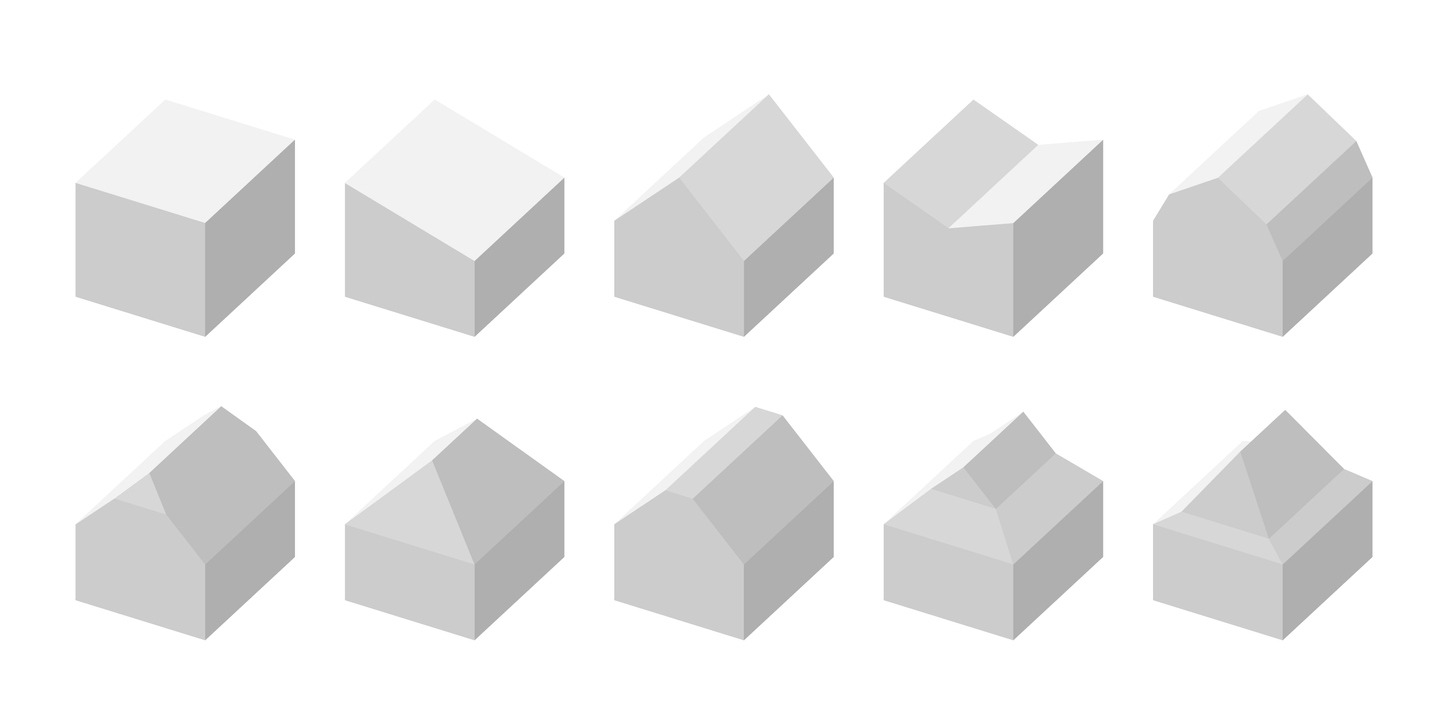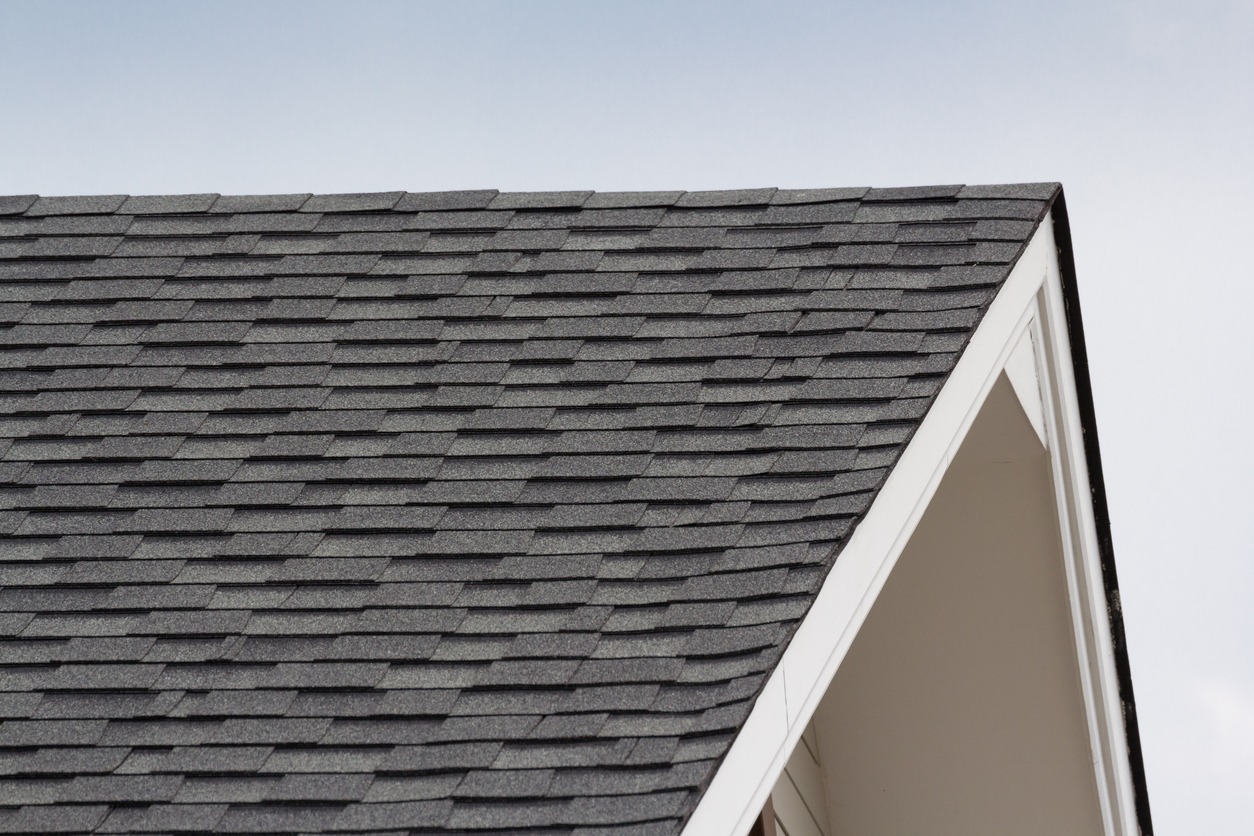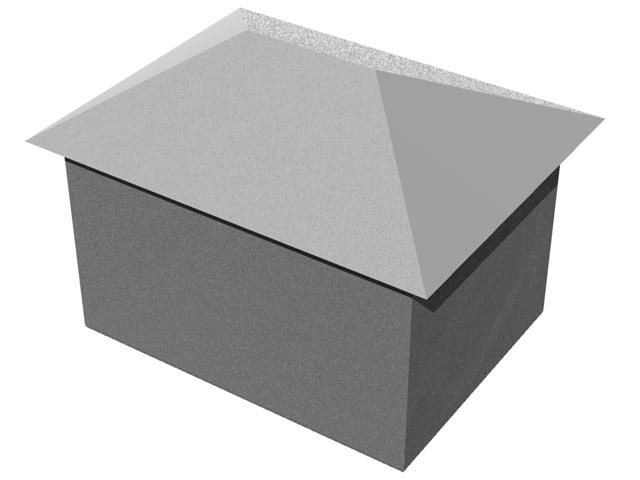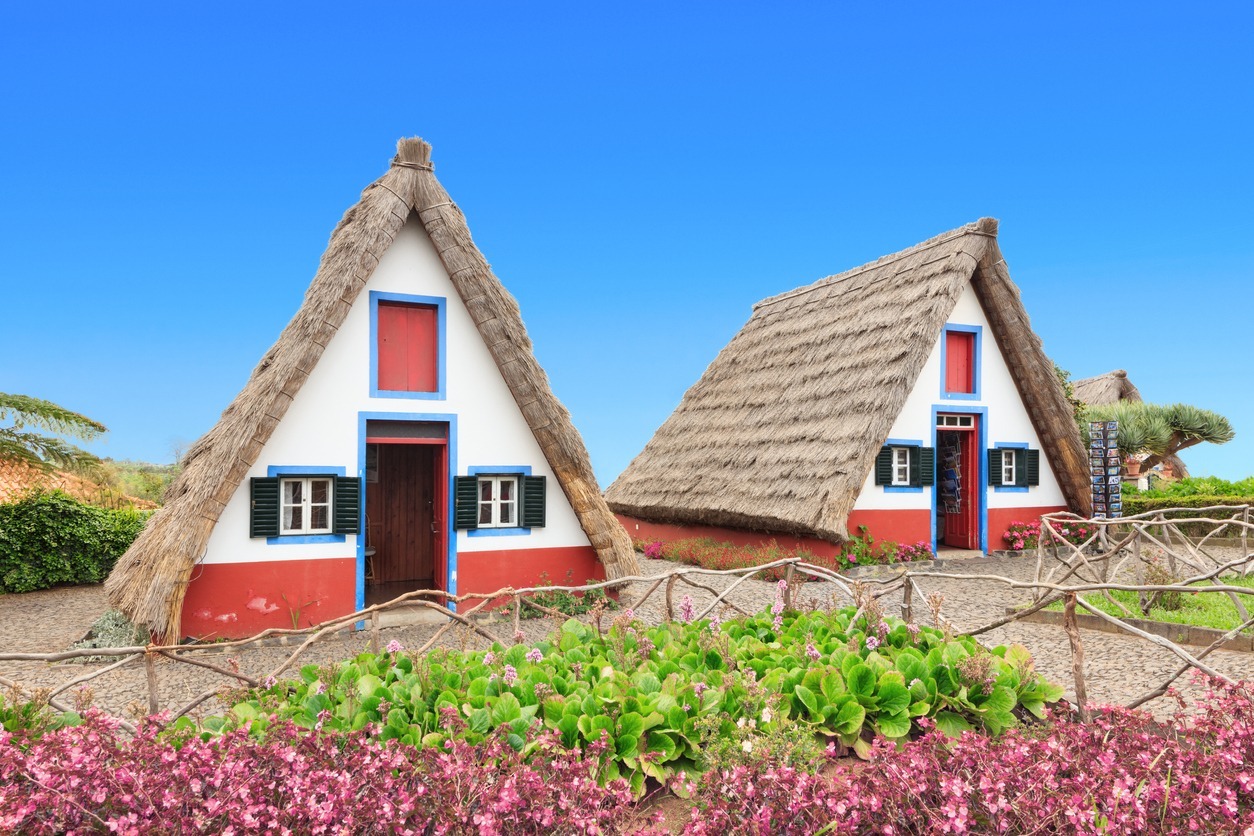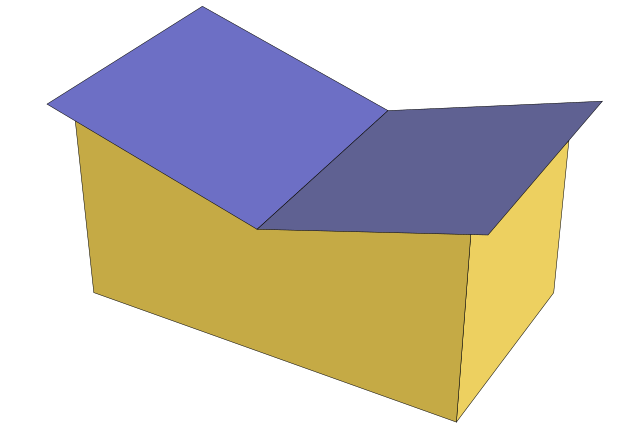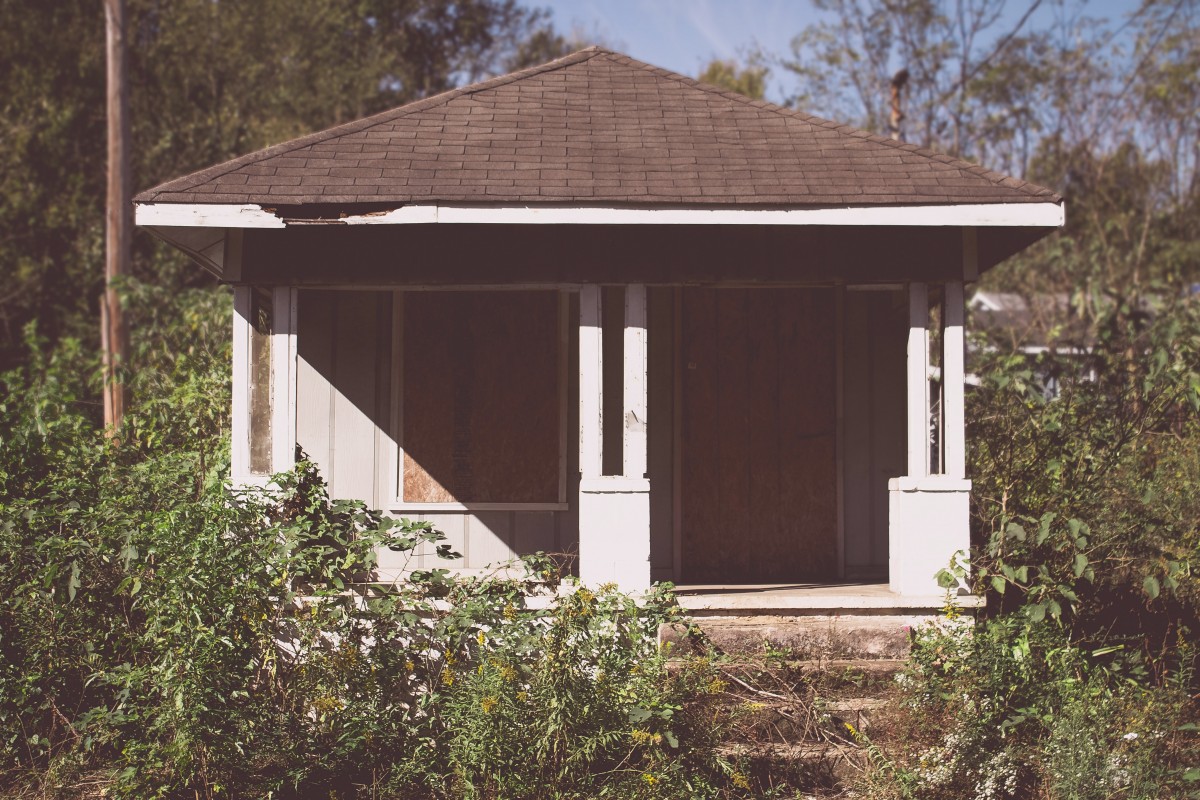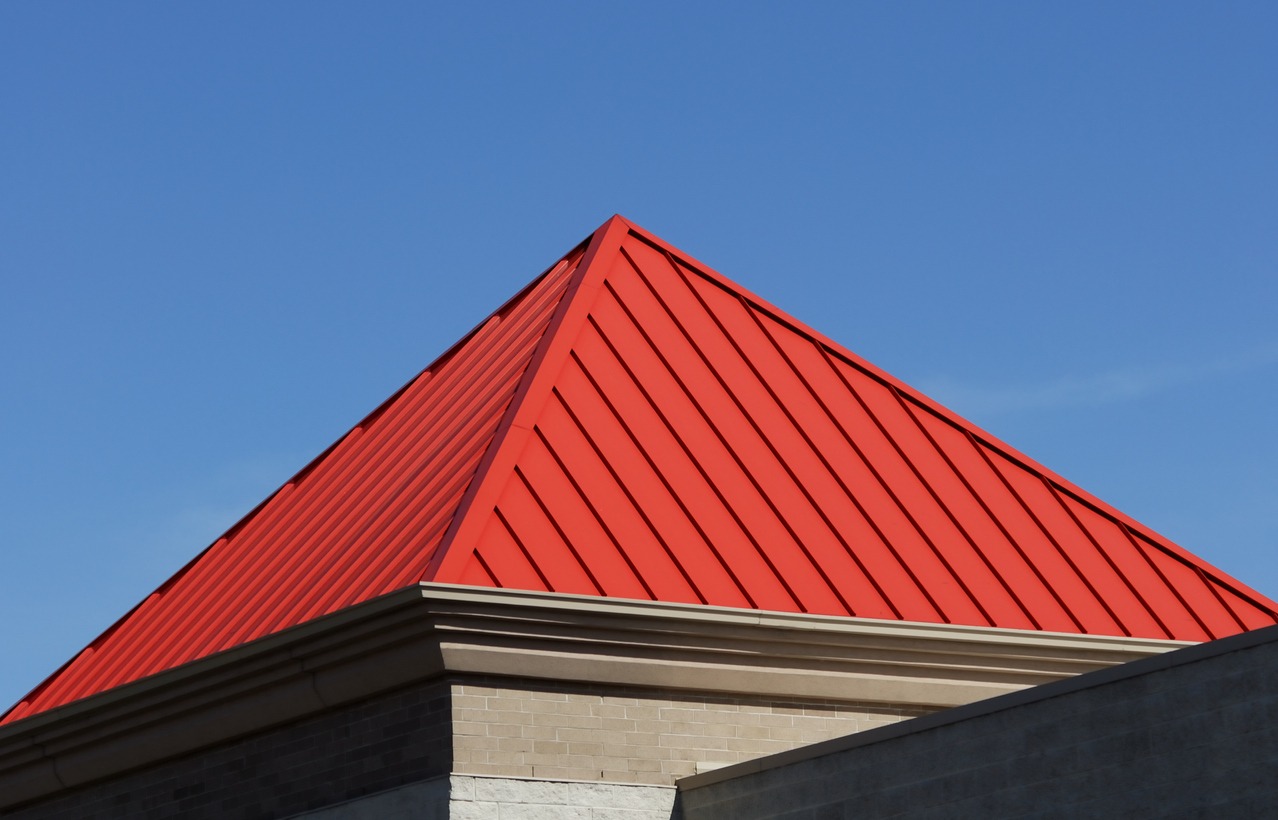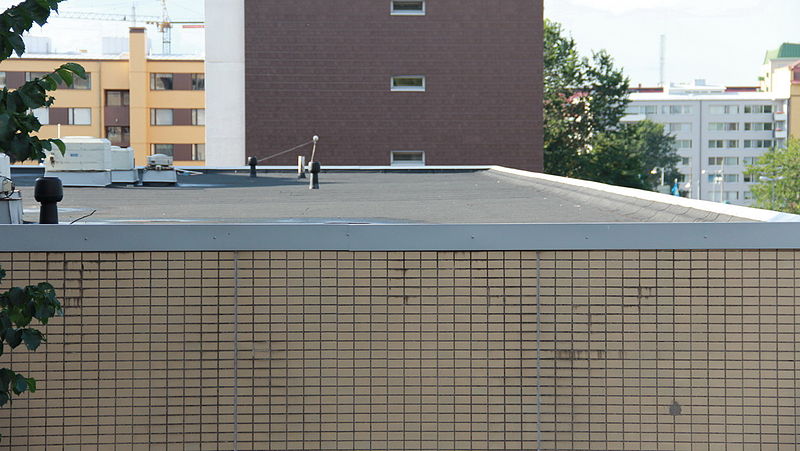If you don’t have an architecture degree, you probably don’t know the fancy name for your home’s roof style. You might never have thought, “What kind of roof does my house have?” Yet, the way your roof is built is super essential for keeping your family safe from bad weather, especially if you live by the coast where hurricanes can happen.
When you buy a new house or update your home insurance, the insurance company will want to know what your roof looks like. If you’re unfamiliar with terms like “gambrel” or “mansard,” it could be hard to answer that question. This picture guide will help you figure out the type of roof your house has.
Gable Roof
Also known as a pitched or peaked roof, a gable roof is really popular, especially in North America. It has two sloping sides that come together at a ridge, making a triangular shape. The slope can be steep or not so steep, but it’s usually pretty slanty.
People love it because it’s simple and straightforward. You’ll find this roof on houses with cool dormer windows and even on big buildings.
Pros:
- Water and snow slide right off the slanted roof
- Easy and cost-efficient to build
- Looks good with any kind of house style
Cons:
- Not ideal for regions with high winds and hurricanes
Open Gable Roof
When someone makes a sketch of a basic structure of a house, they’re probably drawing an open gable roof. Different gable roof styles exist, but the open one is the most familiar. An open gable roof, also known as a pyramid roof, has two sloped sides that meet at a point on top, making triangular sides that are open. There’s at least one gable, like a triangle connecting the walls and the two slopes.
Pros:
- Easy to design and works well for new homes
- Cost-efficient to design and simple to install
- The steep slant helps water and snow slide off easily
Cons:
- These roofs might lift or even fly off when there’s tough weather and strong winds
- Lots of houses have this kind of roof, so if you want something special, it might not be the best pick.
Box Gable Roof
Think of the box gable roof as a cousin to the basic gable roof but with a twist. The basic gable has those pointy parts on the sides, while the box gable really plays up those pointy parts and closes them off. It’s like adding little boxes to the ends. Sometimes, this kind of roof even looks like a second house on top of the main structure. You might spot it on houses with a Cape Cod style or any other house with a gable-style roof.
Pros:
- More unique and different from regular gable roofs
- You can install a window on either end of the building in the triangular end
- Provides extra space for insulation
Cons:
- Like gable roofs, they are susceptible to strong winds
- Depending on how your house looks, the roof might seem a bit bulky.
Gambrel Roof
You’ll spot a gambrel roof on a classic red barn. It’s got a slant that’s not too steep at the top, then two sides that come down, making it look like a four-sided structure. It’s similar to gable styles but with two extra sets of symmetrical slopes on each side. These roofs have been around since Dutch-colonial times and are now popular on houses and barns.
Pros:
- Simple but more decorative than a gable roof
- Cost-efficient to build
- It offers extra space for an attic or a loft
- You can add windows
- Different types of roof materials can work with this style
Cons:
- Not so great at handling heavy snow
- It doesn’t perform well in hurricane zones
- Can have trouble ventilating
- Custom fits can be complicated to place on an existing structure – it’s best to install it on a new construction
Hip Roof
A hip roof comes with four sloping sides that meet at a ridge or peak. All sides of the roof slope down, even the front and back. A standard hip roof has a square-like shape, but this style has many variations. Imagine a square or rectangular house with a pyramid-shaped roof – each side sloping down.
You’ll find these roofs on fancy French colonial-style homes or those cozy single-story houses. Actually, they can work on all sorts of houses.
Pros:
- More durable than two-sided gable roofs
- Stable against strong winds
- Suitable for areas with heavy snow
Cons:
- Costs more than regular gable roofs
- Setting them up can be a bit more complicated, requiring skilled builders and more materials.
Hip and Valley Roof
A hip and valley roof is a more intricate version of the hip roof. They come with multiple hipped sections that meet at a valley. This is often used on larger houses and structures with a unique architectural design, requiring multiple intersecting types of roofs to work. If not done right, it might seem a bit big and heavy. That’s why lots of hip and valley roofs have windows, skylights, and other cool things to make the space exciting and break up the monotony of the big surface.
Pros:
- It can be installed with windows and skylights
- Boosts curb appeal
- Can withstand strong winds
- Have extensive gutter systems
- Creates a spacious attic or upper level
Cons:
- More expensive and takes longer to put up
- More valleys might mean more chances for leaks
Gable and Valley Roof
A gable and valley roof is a smart choice if you want to turn your upstairs attic into a cozy living area. It’s like a classic gable roof but with extra parts sticking out from the sides, kind of like a roof intersection. This adds more valleys and opens up more space on the upper floors.
Pros:
- Provides more room in the upper floor or attic
- A beautiful take on the standard gable roof
- Perfect for making your home bigger
Cons:
- More valleys might mean more chances for leaks.
- More expensive materials and labor
Mansard Roof
The mansard roof combines a hip roof and a gambrel roof. It has four hipped sides, but each has two slopes that make the roof look curb. Also known as a French roof or a curb roof, this style originated in France and got its name from the French architect François Mansart. These roofs were really hip in Victorian-style houses in the 1800s, and they’re still used in all sorts of buildings today.
Pros:
- Provides more space upstairs or in the attic
- Allows for add-on floors, balconies, and other additions
- Aesthetically pleasing
- It can be installed with larger windows on the upper floor or attic
Cons:
- Expensive and complicated to install
- This roof style is rare, so it’s hard to find experienced contractors should you need to repair
- High maintenance
- Snow and water might pile up on the flat part
- Windows installed on the side slopes can be prone to leaks if not properly sealed
Skillion Roof
A skillion roof is all about having one flat, slanted surface rather than two surfaces meeting in the middle. You often see these in modern architecture. Sometimes, there’s even another slope on the other side, but at a different height or angle. This gives your house an ultra-modern look, both inside and out. It’s a fancy shape that brings in light and space to places that usually don’t get much with a regular pitched roof.
Pros:
- Simple and inexpensive
- It gives homes a modern, sleek look
- The steep slope helps rain and snow slide down easily
- Allows for more windows and even skylights
Cons:
- Not much space up in the attic
- More susceptible to damage from high winds and storms
A-Frame Roof
A classic A-frame roof is steep and makes a pointy “A” shape. They often run all the way from the ground to the point to make a unique design. Cabins are one of the most famous structures with an A-frame roof, but it’s also popular with modern houses, like tiny houses.
Pros:
- Good for areas that receive heavy rain, snow, and winds
- Keeps houses cool
- Works great for cabins and tiny homes
Cons:
- The steep slopes can make decorating the inside a bit tricky
- It may not be great at saving energy, especially in colder areas
Bonnet Roof
A bonnet roof comes with four sides and a gentle slope at the bottom that hangs over the sides, just like a bonnet provides shade. It’s similar to a hip roof but extends much further out from the sides of the house. This extension allows for a covered patio and wrap-around porch. This type of roof is popular in tropical regions, gazebos, and pool houses.
Pros:
- Creates shade around all sides of the house
- The hipped sections are wind-resistant
- Perfect for staying cool under the sun
- Provides extra space for indoor and outdoor living space
- Allows easy installation and maintenance of gutters
Cons:
- It can be pricier than other basic roofs.
- Some folks might think it’s outdated, so it might not fit all styles
Butterfly Roof
A butterfly roof gets its name from how it looks – kind of like the wings of a butterfly. It’s the reverse of a gable roof. The two sides slope down towards each other and make a valley in the middle rather than a high-pitch point. This style is unique and has a mid-century modern vibe.
Pros:
- Great for collecting rainwater
- Interior walls can be stretched to make stunning gallery walls rather than having the highest pitch in the center of the room
- Can handle strong winds and storms
- Inside, you can stretch your walls out and make them into cool gallery spaces.
- They handle strong winds and bad storms really well.
Cons:
- Expensive and tricky to put together
- The complex design makes installation long and requires extra expertise
- It can trap snow, ice, and other debris
- While they’re good at catching rain, they can also trap snow, ice, and other stuff.
Dutch Gable Roof
Also called a Dutch hip roof, a Dutch gable roof is like a mix of hip and gable roofs with a little twist. It’s got a gable roof in the middle, surrounded by a hip roof with four slopes. The name comes from the fact that it’s often seen on traditional Dutch houses and other types of buildings in Europe and North America.
Pros:
- It gives your home a fancy, upscale look
- Creates extra space upstairs
- It can handle all sorts of weather – rain, snow, and strong winds.
Cons:
- Expensive to build
- Complicated installation and construction
- The extra slopes mean more chances for leaks
- You may need only waterproof materials
Shed Roof
Unlike the other roof styles, a shed roof only has one slant. You’ll often find these on barns, sheds, cabins, and even some mid-century modern houses. It’s simple, but it works well to keep water and snow from sticking around, hence the name.
Think of a shed roof as a simple slope. It’s kind of like a skillion roof. These roofs fit with lots of different styles.
Pros:
- Inexpensive and simple to build
- The slope helps rain and snow slide right off
- Requires fewer materials
- Works with different kinds of roofing materials
- Great for installing skylights
Cons:
- Can be damaged by high-wind storms
- Works for limited home styles
Lean-To Roof
A lean-to roof is a version of a shed roof but with extra sloped parts that lean on the exterior wall of the house. It’s easily recognizable by its dramatic angles and slopes, connecting without a peak. You’ll often find these on farms that act as shelters for animals like horses. But they’re also awesome for regular houses, giving them a modern look that never goes out of style.
Pros:
- Simple to install
- Adds more structure to the home’s design
- Great for water run-off
- Can make the house look modern
Cons:
- They might not work for bigger homes.
- May take away attic space
- Not suitable for areas that experience intense hurricanes
Pyramid Roof
This one is pretty self-explanatory: imagine the pyramids from Ancient Egypt. A pyramid roof is kind of like that. It’s a type of hip roof where all four sides come together at a point in the middle. It’s often seen on smaller structures like cabins, pool houses, and garages.
Pros:
- Resistant to different types of weather
- Great for hurricane-prone regions
- Gives ample space for a gutter system
- Adds height to a home
- High ceilings offer attic or upper-level space
- When exposed upper-level windows are shaded, overhangs can bring energy cost savings
Cons:
- Multiple sides create more chances for leaks
- Costs more than standard gable roofs
Jerkinhead Roof
Jerkinhead roofs are a mix of gable and hip roof styles. These roofs have two sides that come to a point but with much shorter, clipped ends. Regular gables can sometimes get damaged by strong winds, and in some cases, the wind could even lift the roof off. The clipped ends on a jerkinhead roof help protect it from the wind. It’s often seen in houses that have a Tudor, Craftsman, or Queen Anne style.
Pros:
- Excellent at handling strong winds – better than a regular gable
- The slopes help with water and snow drainage
- It creates more attic space than a hip roof
- The clipped ends create an old-world charm
Cons:
- More expensive to install
- Requires more waterproofing measures due to extra seams
Saltbox Roof
A saltbox roof is a combination of different roof styles. It’s got a steep slope at the front, kind of like a skillion or shed roof. But it still comes up to a point in the middle, and the back slope is shorter and less steep. This style makes one side of the house look bigger than the other.
Pros:
- Great for areas that receive strong winds
- Stylish and functional design
- Great for shedding snow and water
- It can make a one-story house look taller as it creates more living space
Cons:
- More complicated than a regular gable roof because of the asymmetrical lengths
- It does not provide extra attic space
Flat Roof
When we say “flat roof,” we don’t really mean totally flat – it’s more like a very gentle slope of about 1-2 degrees. This slight slope helps water drain away, but flat roofs are made of different materials that can handle a bit of standing water without collapsing.
The main types of materials for flat roofs are membrane, modified bitumen (MBR), or built-up roofing (BUR).
Each type has its own pros and cons, depending on where you live and what kind of building you have. While flat roofs are more common on big buildings, you can also find them on apartment buildings and older houses.
Pros of Membrane Flat Roofs:
- Repairs are DIY-friendly
- Inexpensive to maintain and install
- Lightweight material doesn’t need reinforcement
- Energy-efficient
- Tough against leaks
Cons of Membrane Flat Roofs:
- It only works best on roofs without things like chimneys or HVAC systems sticking out
- Susceptible to punctures from debris or big storms
- More seams can mean more chances for water to sneak in
Pros of MBR Flat Roofs:
- Can handle severe cold weather conditions without cracking
- Highly durable
- Low maintenance
- Recyclable
Cons of MBR Flat Roofs:
- Requires highly skilled laborers to install
- Like membrane roofs, they are susceptible to leaks if not properly adhered
- Less aesthetically pleasing than other flat roof materials
Pros of BUR Flat Roofs:
- Protective against harmful UV rays
- Easy to repair
- Great for roofs that receive high foot traffic
- Cost-effective
- Low-maintenance
Cons of BUR Flat Roofs:
- Requires highly skilled laborers to install
- Might crack in really cold weather
- Heavy and needs extra reinforcement
